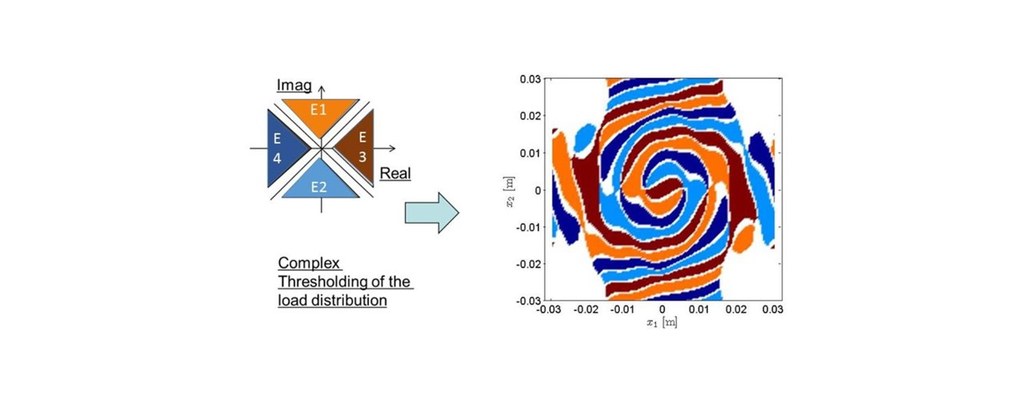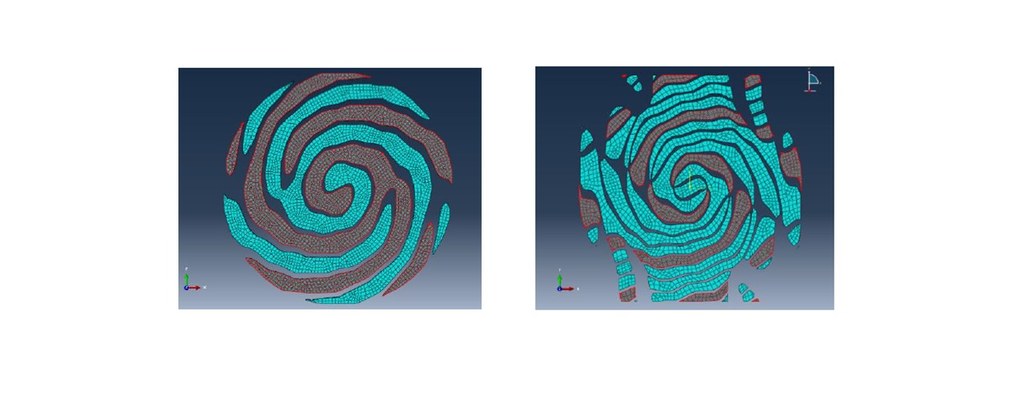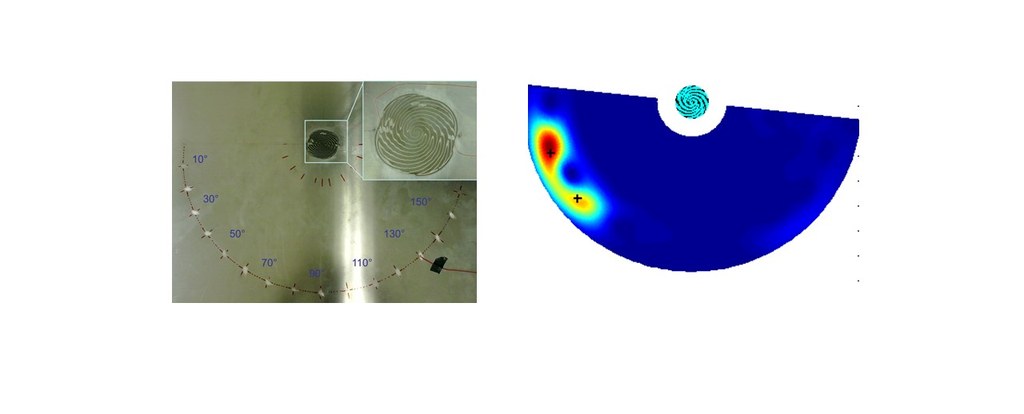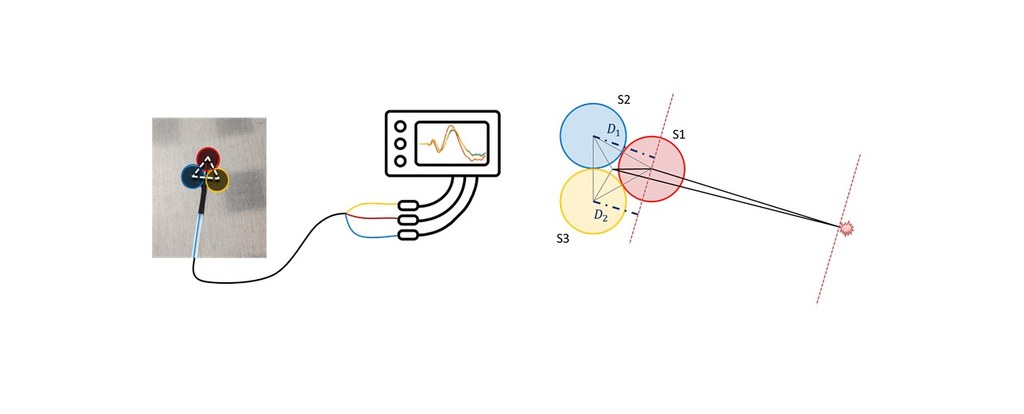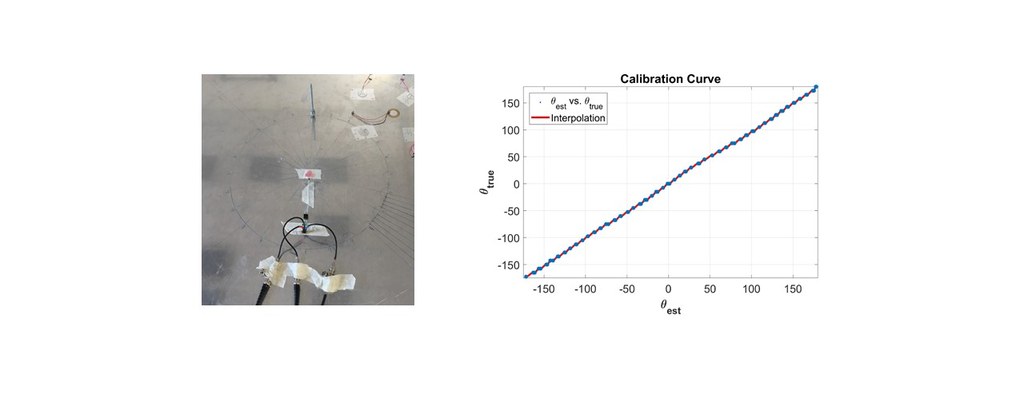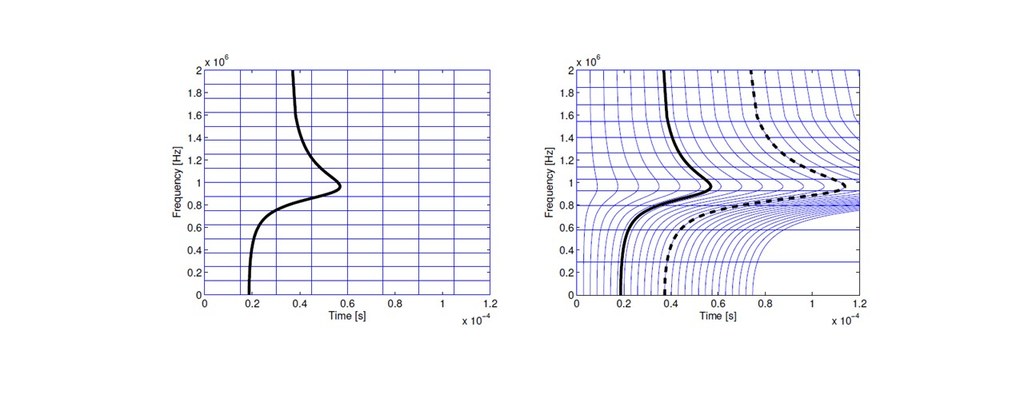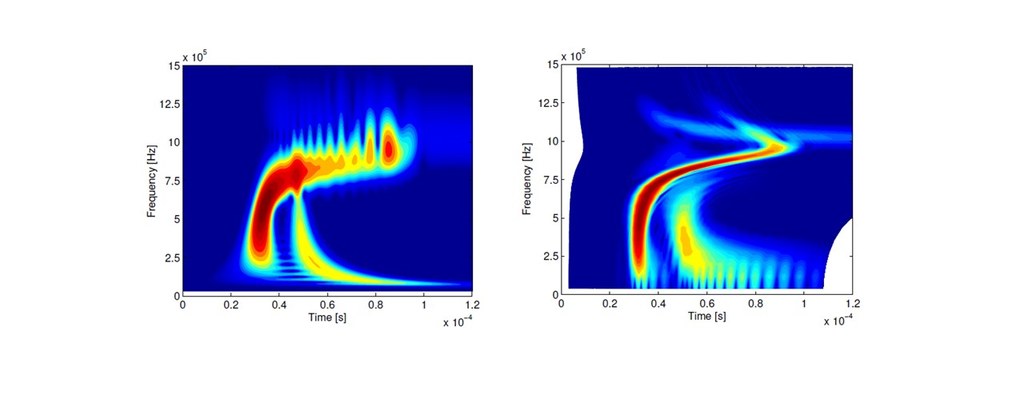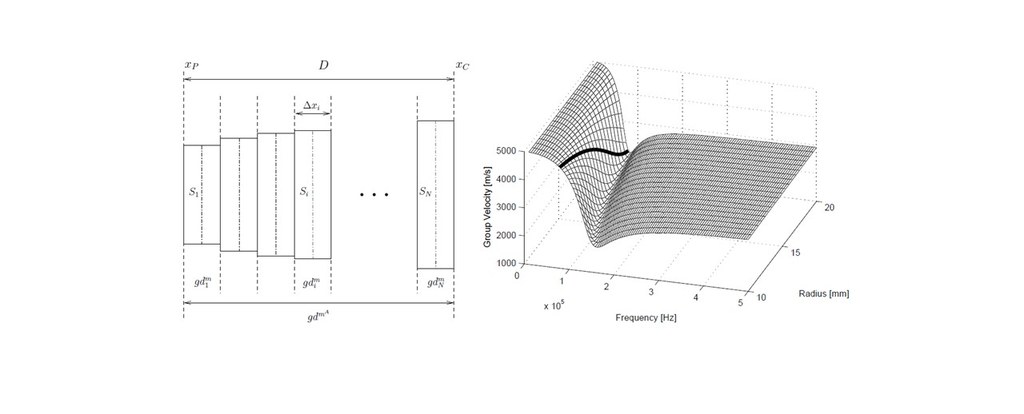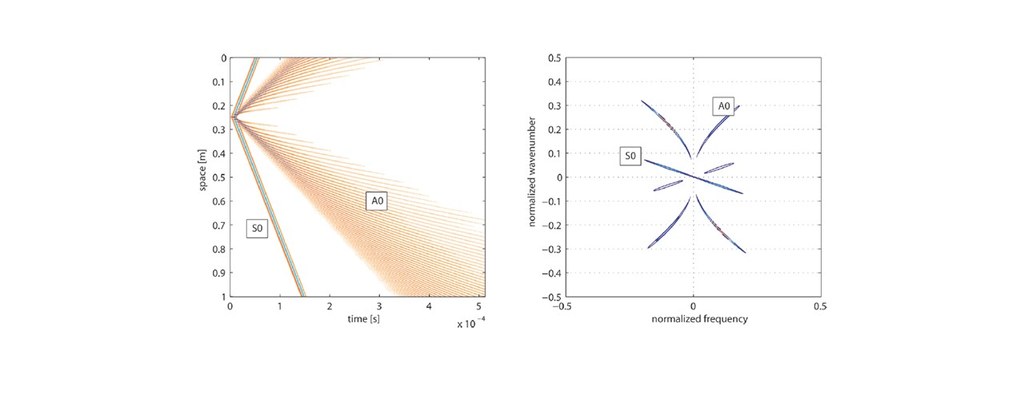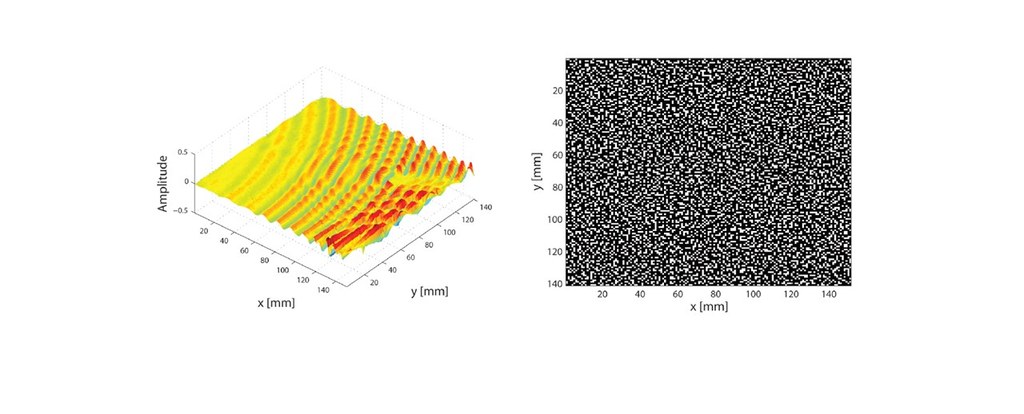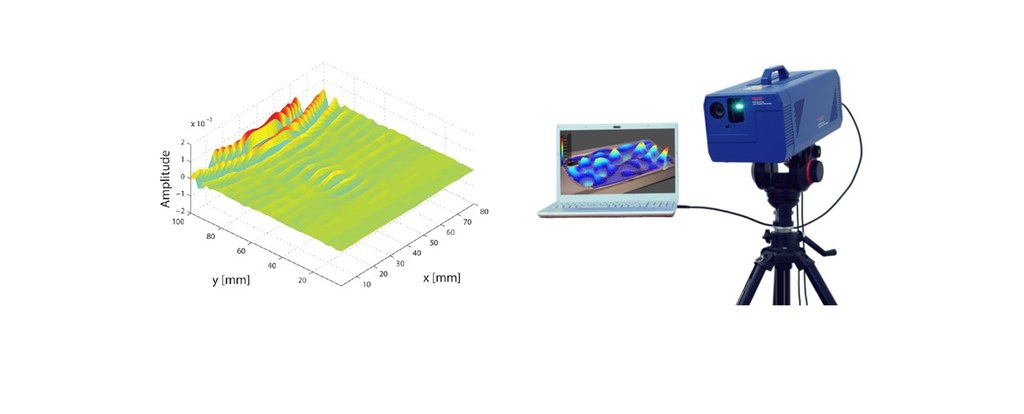Directional transducers & Signal Processing for damage detection
Inherent directional piezoelectric trasducers
Guided waves can be proficiently exploited for NDT and SHM of plate-like structures using smart material piezoelectric transducers. These transducers are bonded to the surface of plate-like structures and act as actuators and sensors by exciting and receiving guided waves. Among many kinds of transducers, the ones that have inherent directional features allow to reduce the number of sensors per unit area to be monitored facilitating their up-scaling to real scenarios. Among the possible, we have developed a second generaton of Frequency Steerable Acoustic Transducers (FSATs) capable of beam steering by varying the input frequency and consequently todetect and localize damage in structures. FSATs are based on spatial filtering effect which is frequency-dependent, so that a direct relationship can be obtained between the direction of wave propagation and the spectral content of transmitted-received differential signals. Compared to the first generation of FSATs, the new developed transducers resolve the 180° ambiguity regarding the direction of propagation of the actuated/sensed guided waves signals.
References
- L. De Marchi, N. Testoni, A Marzani, Spiral-shaped piezoelectric sensors for Lamb waves' direction of arrival (DoA) estimation, Smart Materials and Structures, 27(4), 045016 (10 pages), 2018.
-
L. De Marchi, N. Testoni, A. Marzani, A Design strategy to improve the directivity of Wavenumber-Spiral Frequency-Steerable Acoustic Transducers, Proceedings of the 10th International Workshop on Structural Health Monitoring, IWSHM 2015, 907-913, 2015.
-
L. De Marchi, N. Testoni, A. Marzani, Frequency Steerable Transducers with 360° Directivity for Guided Waves Inspections in Plate-like Structures, 7th Symposium for NDT in Aerospace, 16-18 November 2015, Bremen, Germany, 1-8, 2015.
GWs based Time Frequency Transform
Guided waves (GWs) have characteristic dispersive time-frequency representations (TFRs). Unfortunately, any TFR is subjected to the time-frequency uncertainty principle. This limits the capability of the TFR to distinguish multiple, closely spaced guided modes over a wide frequency range. To this aim we implemented a new time-frequency signal processing tool, that we call Warped Frequency Transform (WFT), that in force of a more exible tiling of the time-frequency domain presents enhanced guided modes extraction capabilities. Such tiling can be chosen to match the spectro-temporal structure of the dierent propagating modes by selecting an appropriate warping map which generates non-linearly frequency modulated atoms. The proposed transformation is fast, invertible, and covariant to group velocity-delay shifts. In particular, in this work we propose design and calculation strategies for non-smooth maps tailored to Lamb Waves propagating in a single aluminium plate and to Flexural waves propagating in a hollow steel pipe. Time-transient guided wave propagation events are obtained articially by means of dedicated Finite Element Simulations. The results show that the WFT limits interference patterns which appears with others TFRs and produces a sparse representation of the guided wave pattern that can be suitable for identication and
characterization purposes.
References
- L. De Marchi, A. Marzani, S. Caporale, N. Speciale, Ultrasonic Guided-Waves Characterization with Warped Frequency Transforms, Transactions on Ultrasonics, Ferroelectrics, and Frequency Control IEEE 56(10), 2232-2240, 2009.
-
L. De Marchi, A. Marzani, N. Speciale, E. Viola, Prediction of pulse dispersion in tapered waveguides, NDT&E International 43, 265-271, 2010.
- L. De Marchi, A. Perelli, A. Marzani, A signal processing approach to exploit chirp excitation in Lamb wave defect detection and localization procedures, Mechanical System and Signal Processing, 39, 20-31, 2013.
- L. De Marchi, A. Marzani, M. Miniaci, A dispersion compensation procedure to extend pulse-echo defects location to irregular waveguides, NDT & E International, 54, 115-122, 2013.
Full Wavefield Analysis
Numerous nondestructive evaluations and structural health monitoring approaches based on guide waves rely on analysis of wave fields recorded through scanning laser Doppler vibrometers (SLDVs) or ultrasonic scanners. The informative content which can be extracted from these inspections is relevant; however, the acquisition process is generally time consuming, posing a limit in the applicability of such approaches. To reduce the acquisition time, we use a random sampling scheme based on compressive sensing (CS) to minimize the number of points at which the field is measured. The CS reconstruction performance is mostly influenced by the choice of a proper decomposition basis to exploit the sparsity of the acquired signal. We use different bases to recover the guided waves wave field acquired on aluminium and a composite plate. Experimental results show that a CS based approach allows a reduction of the measurement locations required for accurate signal recovery to less than 34% of the original sampling grid.
References
- T. Di Ianni, L. De Marchi, A. Perelli, A. Marzani, Compressive sensing of full wavefield data for Structural Health Monitoring applications, IEEE Transactions on Ultrasonics, Ferroelectrics, and Frequency Control, 62(7), 1373-1383, 2015.
- Y. Keshmiri, L. De Marchi, N. Testoni, A Marzani, G. Masetti. Full wavefield analysis and Damage imaging through compressive sensing in Lamb wave inspections, TUFFC 65(2), 269-280, 2018.
- Y. K. Esfandabadi, L. De Marchi, A. Marzani, G. Masetti, Damage imaging through compressed wavefield recovery in Lamb wave inspections, 2016 IEEE International Ultrasonics Symposium (IUS), Tours, France, 18-21 September 2016, 1-4, 2016.
